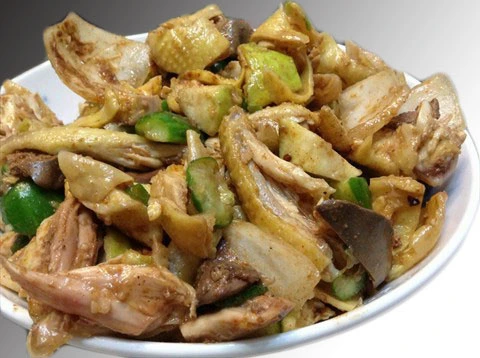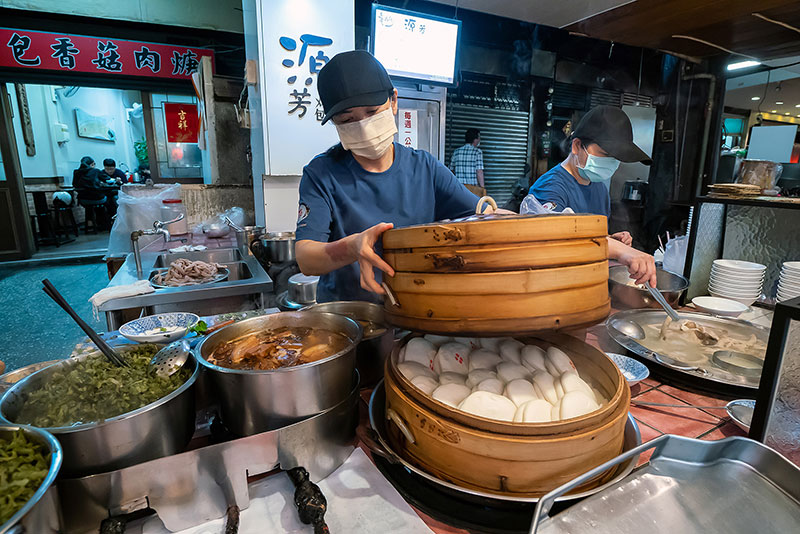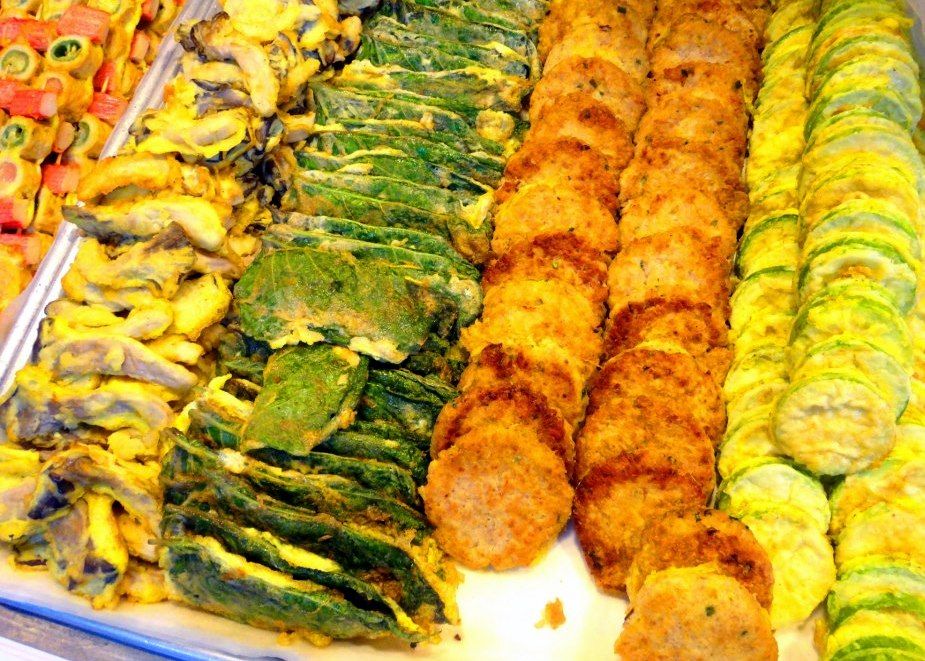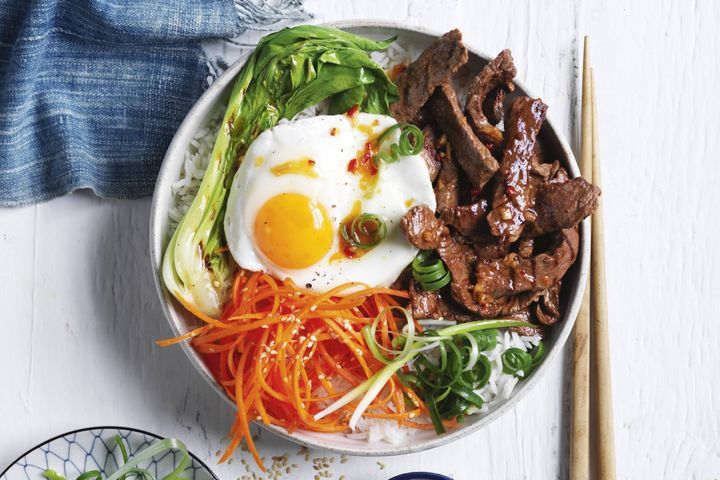Physical Address
304 North Cardinal St.
Dorchester Center, MA 02124
Physical Address
304 North Cardinal St.
Dorchester Center, MA 02124

Korean street food, a mosaic of flavors and textures, is not just about eating; it’s about experiencing a culture that’s as rich and colorful as the dishes served. From the sizzling sounds of Tteokbokki cooking at a street corner to the sweet aroma of freshly made Hotteok, each dish tells a story of heritage and innovation. The year 2024 has brought with it new trends, fusion dishes, and a revival of age-old recipes, making this culinary landscape more vibrant than ever.
Korean street food has a rich and long-standing history that stretches back to ancient marketplace gatherings. Street vendors have been essential in feeding busy workers and travelers for centuries, offering quick, affordable meals.
Traditionally, these stalls were important for economic trade and community building, with each city and region developing its own distinctive flavors and specialties. Over time, the influence of international trade and urbanization led to further evolution and diversity within street foods, adapting to modern tastes while preserving traditional recipes.
As you join me on this mouth-watering journey, prepare to dive into the heart of Korean cuisine. We will explore everything from classic favorites that have stood the test of time to the latest creations that are stirring up the food scene. Our exploration will not just satisfy your taste buds but also provide insights into the cultural significance of these dishes and how they represent the dynamic spirit of Korea in 2024.
Korean street food stands out with its host of special ingredients that impart an unforgettable burst of flavors. Gochujang, the beloved red chili paste, lends dishes their signature heat and depth.
Perilla leaves offer a refreshing, herbal note to many meals, while sesame oil adds a nutty aroma that enriches both sweet and savory dishes. Another staple is the humble kimchi, a fermented vegetable delight that can include napa cabbage or radish and is a mark of the culinary creativity of Korea.
So, grab a glass of Soju, your chopsticks (or a fork, no judgment here!) and let’s embark on this delicious adventure together, discovering the best Korean street food that 2024 has to offer!

There are several varieties of boiled chicken in Korea. The ones made from local ingredients are more delicious than those that use imported soy sauce.
You can find boiled chicken in two forms; white and green. The coloring comes from vegetables like pepper or garlic.
The most popular type is called “yangnyeom guksu” (; lit. “boiled chicken with ginger”). It has thinly sliced cabbage, onion and any kind of vegetable you want to put in it– people top it with sesame seeds or dried fish.
Many places offer both fresh and fried versions of this dish, so you can choose your preference. Since they boil the stuff for an extended time, consider buying their packaging if you eat gluten free.
If you prefer bones over meat, these may be some nice little treats for you. Many restaurants supplement the beef soup with noodles, pancake or rice dishes.
These are good options if you cannot handle much spice. If you don’t care for spices, there are also salads and sandwiches available.

Everyone has their favorite type of pork bun. My personal preference is for fresh pork buns, but either version will satisfy your hunger if you’re hungry.
The ingredients are usually topped with cabbage and other co-stars, making them a great dish to have in your diet. This recipe can be hard at first, but after you get the hang of it, just go order one (or more) fresh pork buns!
These tasty treats are actually pretty easy to make.
But first, you need to prepare some tools. You will need a sharp knife, cooking oil, steamer basket, fine strainer, and two large bowls.
Next, put the rice into the first bowl and add enough water so that there is almost no space between the surface of the rice and the top of the container. Then, put the second bowl containing the glutinous rice next to the rice bowl.
Put the steamer basket inside the pot and fill it with the rice/water mixture. Cover the pan and bring the temperature of the soup to boiling. Once boiling, lower the heat so the liquid simmers. Keep an eye on it until it reaches a rolling boil then take it off the burner.
Now, remember, don’t use salt because it reacts with the glutinous rice, not regular white or yellow rice. When the risotto is done, check how much time it takes for the milk to
The global culinary influence on Korean street food brings an exciting fusion of tastes and textures. Dishes like Korean-Mexican fusion tacos represent this cultural crossroads, as do Korean-style burgers featuring bulgogi-marinated beef patties.
Street vendors are increasingly inspired by global trends, experimenting with Italian-Korean pizza toppings and even Korean-French pastries, creating a delightful harmony that resonates with both local food enthusiasts and international visitors.

If you like hotdogs, then you should try eating them in Korea. While not every beer soup joint or cold dog street vendor serves up good food, most do here. The idea is to buy several kinds of salty dogs from across the city, transport those with your own plastic bag, and consume them at a central location, such as a park.
A plain white paper cup is commonly used to serve the contents (which can be consumed directly) along with any one of thousands of available specialty sauces.
These items are commonly called jeongyew (; also eulyubu). You may know them best by their package names such as “chaekdam” (), “dongsogum” () or “tutim” (). Tutims are soy bean paste cups that come both filled and empty. From the list below, what ketchup would you choose?

Jeon are items that usually come served in parallel courses together with rice or noodles, rather than being eaten by themselves. Rice is traditionally cooked here, but you can also eat jeon with noodles.
Various foods can be considered jeon, including vegetables, meat, cakes, muns, squares, pancakes, and more. Here are some common types of jeon to look for when you’re out shopping or eating at a restaurant.

Everyone has a favorite rice bowl – and if you’re looking for a unique experience, you should try making your own.
Rice bowls are one of the most popular snacks in Korea — there are nearly as many varieties of rice bowls as there are songs in music videos.
What makes rice bowls so special is the addition of all those extras flavor-wise. The type of soup or sauce used to cook the dish can both contribute to and modify the taste, such as adding ingredients like kkaesang (soy bean paste) to create a savory bowl or removing them to add sweet flavors from the ssam tree (elderberry).
The texture can be very different too; while some samosas and burritos may contain more dough than meat, other dishes can be completely made with rice including fried noodles, grilled cheese, and sushi. All come in various sizes too, ranging from small cups to large plates.
Overall, this gives each user multiple ways to customize their bowl to their liking. An added benefit is that these are also incredibly easy to make, which is why they’re called street food. You don’t need to set up an oven or get outside to prepare it.
You can make countless combinations inside your head. Every person who eats rice knows that its versatile nature allows for great customization.
In recent years, there has been a move towards healthier street food options, catering to the wellness-conscious. Vendors are now offering vegetarian and vegan-friendly choices, including dishes such as vegetable kimbap and mushroom-based fritters.
Many stalls focus on locally sourced, organic produce, ensuring fresh flavors in every bite. Additionally, alternatives to fried foods are gaining popularity, with grilled and steamed dishes providing a lighter yet equally delicious alternative, letting people indulge without the guilt.
As our culinary journey through the vibrant streets of Korea comes to a close, it’s time to reflect on the extraordinary array of flavors, aromas, and experiences that have graced our taste buds. The world of Korean street food in 2024 is a testament to the country’s relentless innovation while staying true to its culinary roots. We’ve witnessed how traditional recipes have been reinvented and how new trends have taken the food scene by storm.
Each dish we encountered was not just a meal; it was a story – a narrative of history, culture, and passion interwoven into every bite. From the classic Kimbap that reminded us of Korea’s rich history to the innovative fusion dishes that symbolize its dynamic future, our exploration has been nothing short of a culinary odyssey.
As we conclude this journey, let’s cherish the memories of the bustling markets, the friendly vendors, and the joy of discovering the unexpected. Korean street food in 2024 has shown us that food is more than sustenance; it’s a language of its own, speaking directly to the heart.
Thank you for joining me on this delicious adventure. Whether you’re a seasoned foodie or a curious traveler, I hope this blog has inspired you to explore the wonders of Korean street food and perhaps create your own food tales. Until our next culinary adventure, keep savoring the flavors and stories that each dish brings!
Korea’s street food festivals are a lively showcase of culinary artistry. Events like the Seoul Bamdokkaebi Night Market highlight an impressive spectrum of street foods.
Here, visitors can explore stalls that feature everything from traditional dishes, like savory pancakes known as jeon, to inventive new creations, such as fusion tacos. These festivals transform cityscapes with a lively atmosphere filled with music, art, and the sizzle of food being prepared, representing a genuine celebration of Korean culture and innovation.
Seen other side dishes? Get in touch